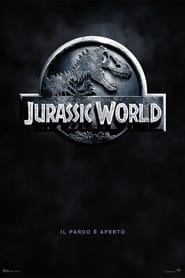The Indominus Rex had gone through many changes in appearance during the development of this movie. Director Colin Trevorrow has said that it was difficult to design "because we needed it to feel grounded in genetic attributes of animals on our planet right now." The first design was created by Legacy Effects as a digital sculpture. Aaron McBride and his team at Industrial Light & Magic then further designed the Indominus Rex with the aim to create a fictional dinosaur that still appeared grounded in the natural world. One early design by Aaron McBride was similar to the one seen in the movie, but had a more triangular antorbital fenestra like that seen in members of Charcharodontosauridae (the family that Giganotosaurus, one of the dinosaurs used in Indominus Rex's creation, is a member of), more quills, had only three fingers, lacked osteoderms and horns, and had a small sail located on its neck like that seen in some restorations of Acrocanthosaurus. In the storyboard by David Lowery, the Indominus Rex resembles McBride's design with its arms somewhat shorter. One early design that displays these traits featured it with a skull that resembled Abelisaurus with osteoderms the size of a large theropod like Tyrannosaurus or Gigantosaurus with arms that were more therizinosaur than the final version. This conceptual design had another variant that was used in pre-production size chart of animals that were (or were planned) for the movie in which it was dark gray and visibly taller than T. Rex. A toy prototype also resembles Abelisaurus like the previously mentioned concept art, but was more slender with arms like a Velociraptor, and a set of fangs on the front of each of its jaws. For guidance, Industrial Light & Magic sought the advice of veteran paleontological advisor of the franchise Jack Horner. One of Horner's suggestions was Therizinosaurus, because of its large arms and claws, which Horner says Industrial Light & Magic used as a reference when designing the hybrid. Glen McIntosh also had many dissucssions with Horner and McIntosh's input was incorporated in the developing design of the hybrid. Industrial Light & Magic's Krishnamurti Costa created the original maquette of the Indominus Rex from artwork by Legacy Effects, which served as the template for the digital model. Glen McIntosh was noteably concerned about how the mouth configuration of the Indominus Rex would be, so he created several concepts that he persented to Trevorrow featuring three different choices: fully enclosed teeth like komodo dragons and the raptors, half-exposed teeth like the T. Rex, and finally exposed, interlocking teeth like a saltwater crocodile, the latter of which was chosen. Trevorrow wanted McIntosh to pursue the exposed teeth design, and McIntosh created several concepts in response. McIntosh also created descriptive illustrations and sketches to emphasize its osteoderms and defined several of its skull fenestrations, particularly the antorbital fenestra and the infratemporal fenestra. The conceptual design by Seth Engstrom depicts it with a carcharodontosaurid head with iguana-like spikes running down its back. Several of the concepts by Engstrom depict it with having shorter hand digits with long therizinosaurid claws unlike the final version. Colin Trevorrow liked this trait, and thus it was implemented in the final design of the Indominus Rex. Industrial Light & Magic further gave the hybrid its signature underbite to contribute towards giving it a menacing look. There exists three concept art pieces that showcase its underbite and are close to the hybrid's finalized appearance. The first has a more triangular antorbital fenestra like that seen in carcharodontosaurids with thick quils on its arms and lacks horns and quills on its head. Furthermore, its color scheme is a mixture of yellow and tan instead of a grayish white. The second known design depicts it with a wider skull and without quills and thumbs. Finally, there is a design that is nearly identical to the one seen in the movie, yet lacks horns, quills, and thumbs with a row of spikes in place of the horns and quills. At some point, the design of the eye color and eye shape of the final Indominus Rex was based on a goshawk. The Indominus Rex was later given horns by the designers to differentiate it from the T. Rex. Jubinville Steve was in charge of creating the CGI model of the Indominus Rex, modifying the maquette created by Kris Costa to fit the needs of Director Colin Trevorrow. Jubinville created a reference library of his own consisting of lizards, birds, and other animals when designing the dinosaur hybrid. Martin Murphy created the scale pattern of the Indominus Rex using the software MARI by The Foundry and worked with Jubinville in designing the 3-D model. The two worked back in forth with each other in ZBrush, Adobe Photoshop, and MARI to complete the computer generated model of the Indominus Rex. The creation of the CG model of the Indominus Rex has gotten Jubinville, Murphy, Aaron Grey, and Kevin Reuter nominated for the 14th Annual VES Awards in the category of "Outstanding Models in a Photoreal or Animated Project". For the hatchling, Matt Corcoran simply resculpted the model of the adult, while Jubinville created its eggshell. When creating the hatchling, the aim was to make it "creepy" instead of "cute".
Scritto da il
05-03-2025 alle ore 09:07
Immagini
Nessun dato in archivio
Consiglia
Voto
Nessun dato in archivio
Commenti
Nessun dato in archivio
Nessun dato in archivio
